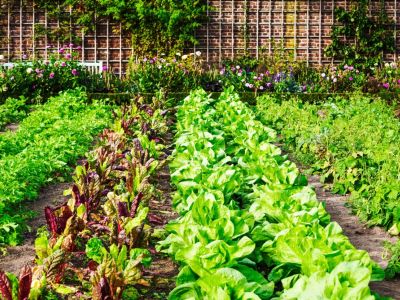How Should Garden Rows be Oriented?
Generally speaking, in the north tall plants such as beans, peas, and corn do best on the north side of the garden. Medium size crops such as tomatoes, cabbage, squash, pumpkins, and broccoli in the center of the garden. Short-growing plants such as lettuce, radishes, beets, and onions will do best in the southernmost part of the garden. Most experts believe that the best way to orient garden rows in the Northern hemisphere is north to south. This gives the most sun exposure and allows for ample air circulation. When crops are planted east to west, the rows tend to shade each other. If you are planting on a steep slope, however, it’s best to keep rows perpendicular to the slope, so that your plants and soil do not end up at the bottom of your hill.
When Shade is Necessary for Crop Arrangement in Gardens
In many places where the summers get acutely hot, some shade is necessary, and the direction of vegetable garden rows is not extremely relevant. A shade cloth is often used in some of the warmer regions of the country to keep the hot summer sun from destroying crops.
